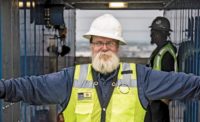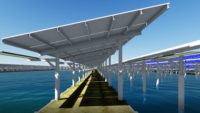To solve labor challenges and improve efficiency in building remote, large-scale solar-power projects across the U.S., McCarthy Building Cos. is borrowing principles of an approach developed by the U.S. government during World War II to accelerate industrial production, despite limits on staffing.
The Training Within Industries (TWI) approach, which also became the core of the “kaizen” business culture in Japan, now is being updated by McCarthy as a training vehicle for its growing array of U.S. solar-power jobs. “When we grew into doing 12 [solar projects] across eight states, we realized pretty quickly that we could not rely on the sort of tribal knowledge we had,” says Scott Canada, senior vice president of renewable energy.
McCarthy hired the world-renowned Kaizen Institute to implement the approach on its large-scale projects. These include the 40-MW Red Rock solar plant, Arizona Public Service’s largest such facility, with 182,880 photovoltaic panels installed; and the 280-MW California Flats project, near San Luis Obispo. Kaizen “helped us to build procedural approaches to putting in solar panels. It sounds simple, but we had crews on different jobs doing it different ways,” Canada says.
TWI programs are designed to create a more efficient relationship between skilled and unskilled craft workers, trainers, and supervisors on tasks that are moderately complex and repetitive, usually on jobs in remote locations. Productivity increased 50% on the Red Rock and Cal Flats projects, says Canada. The firm now is training all its foremen and superintendents in use of the TWI approach and will be extending it to workers involved in more complex electrical work for solar-power construction, including 800 workers on a Bakersfield, Calif., project for a confidential private client.




Post a comment to this article
Report Abusive Comment